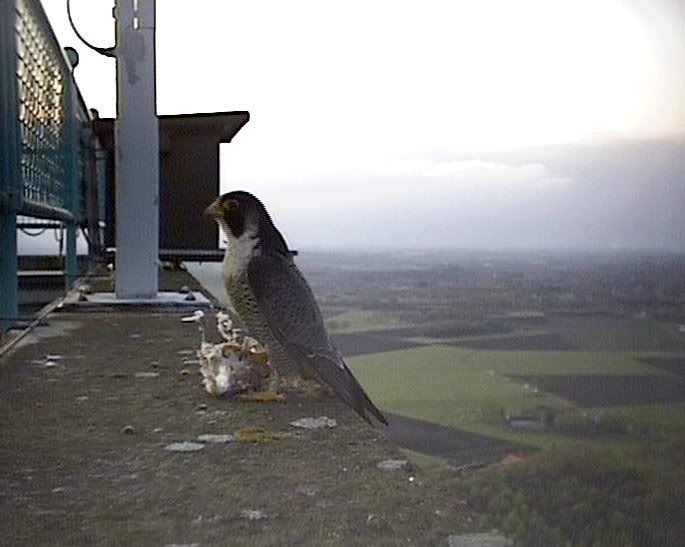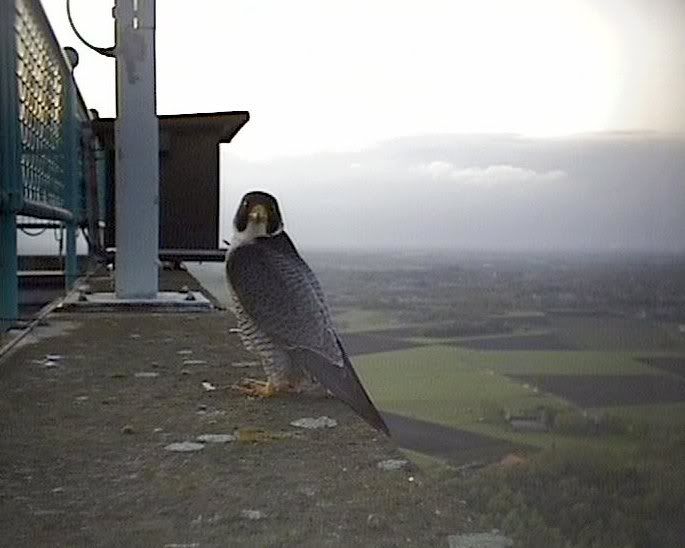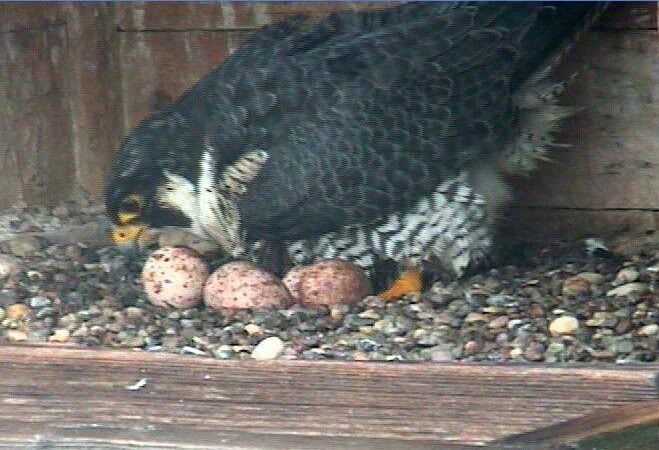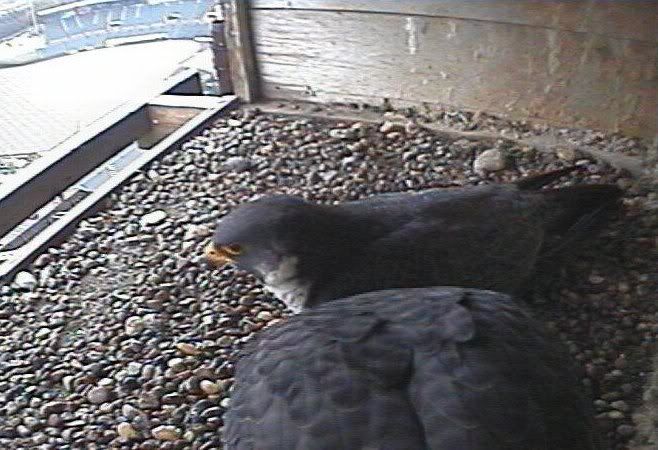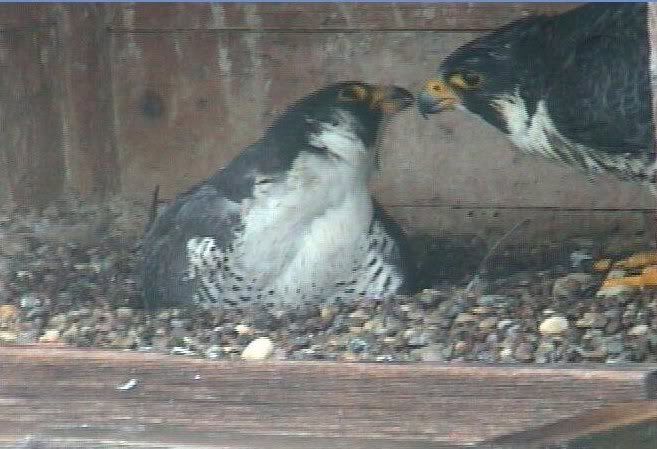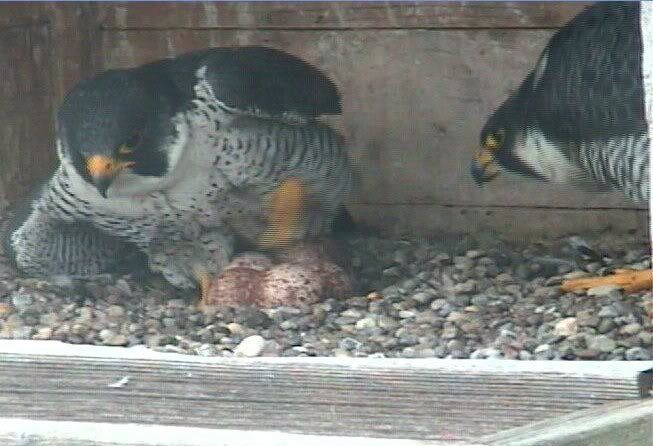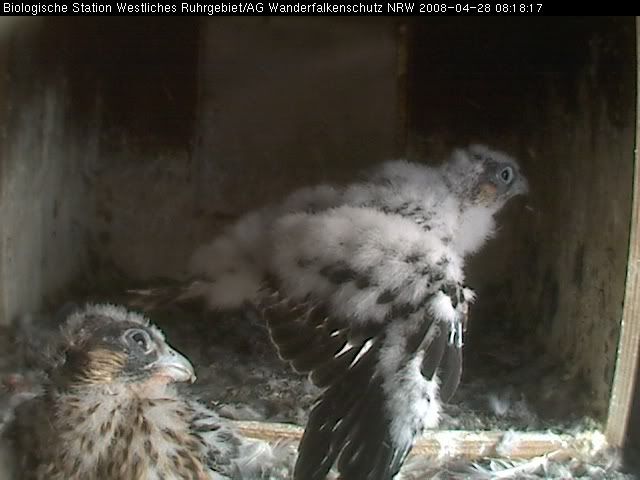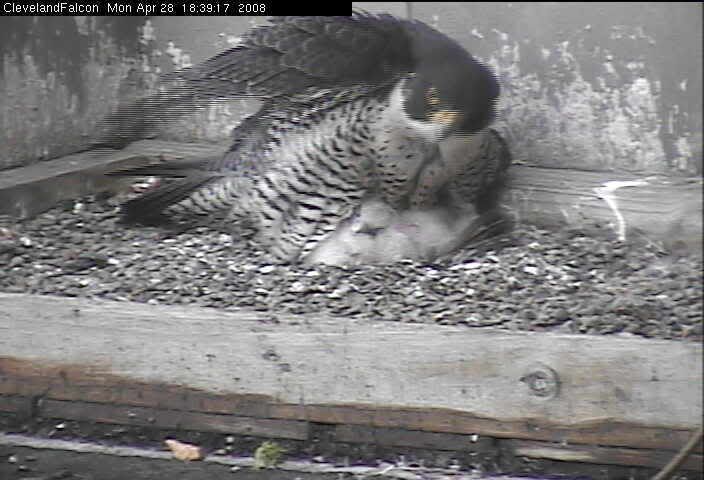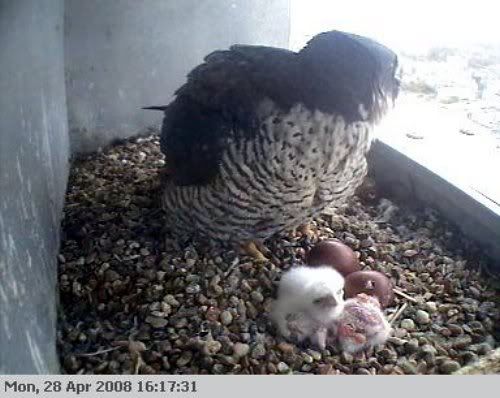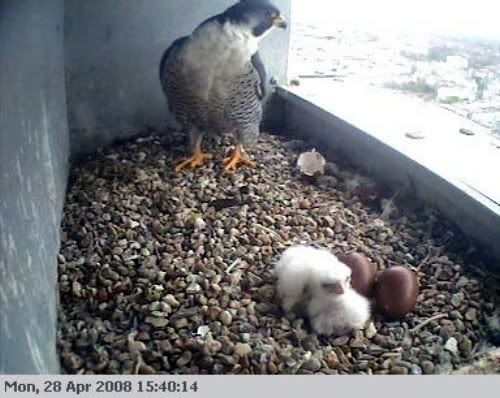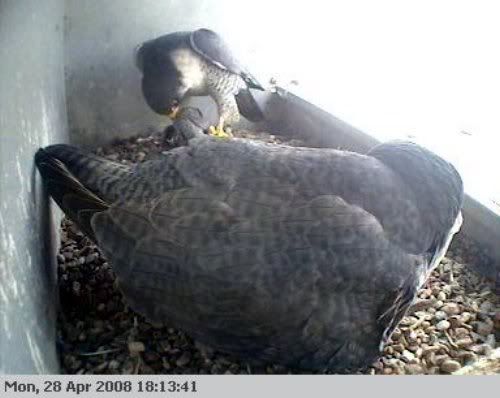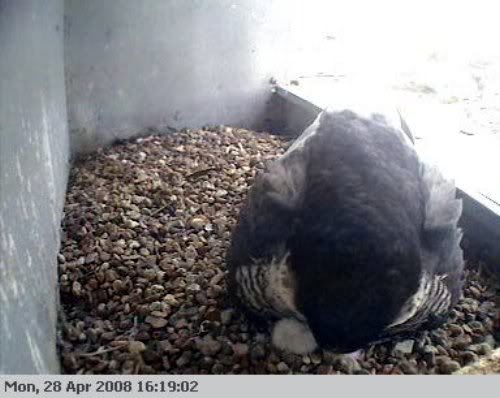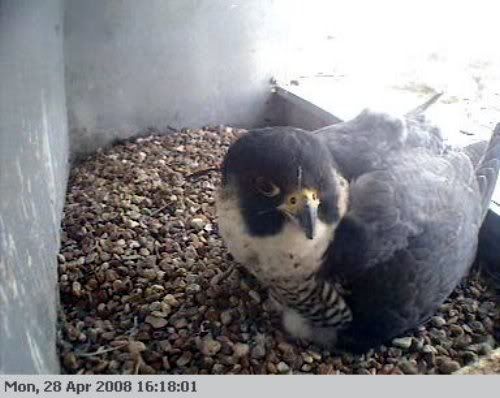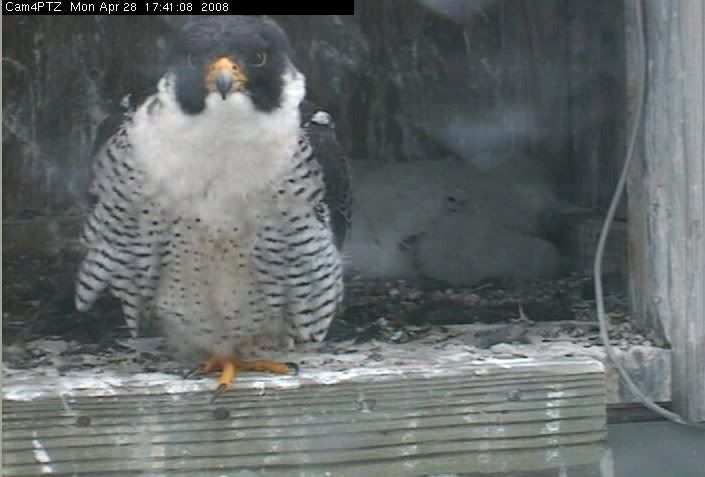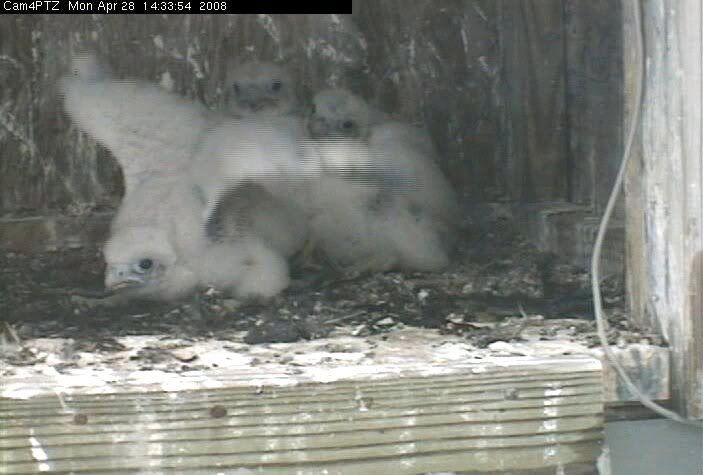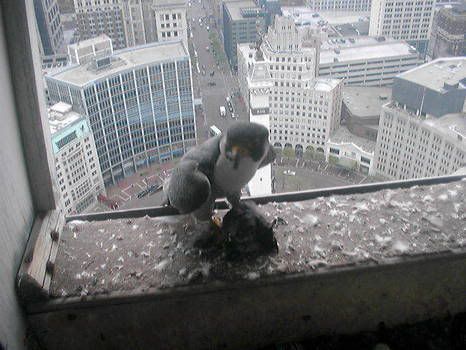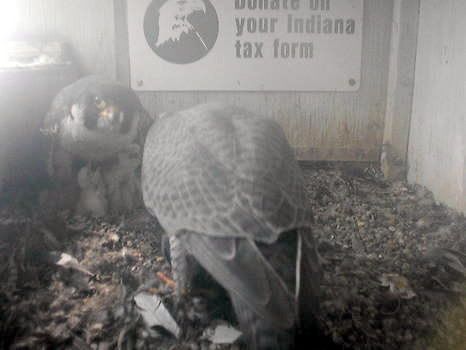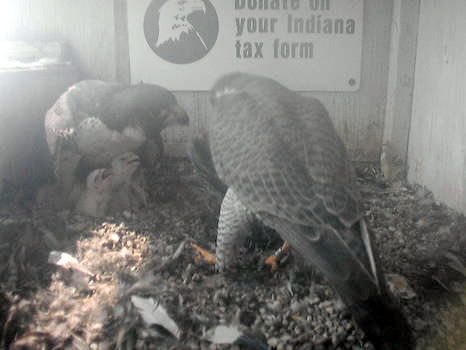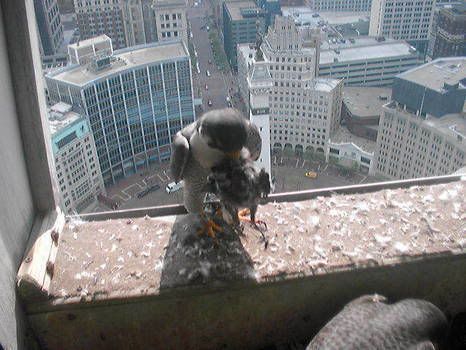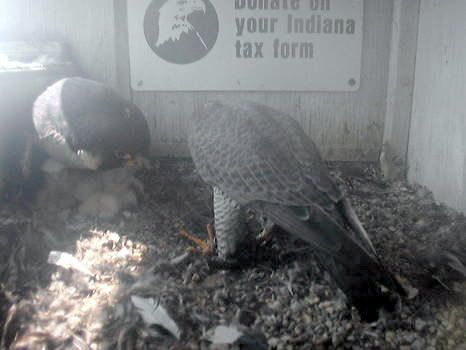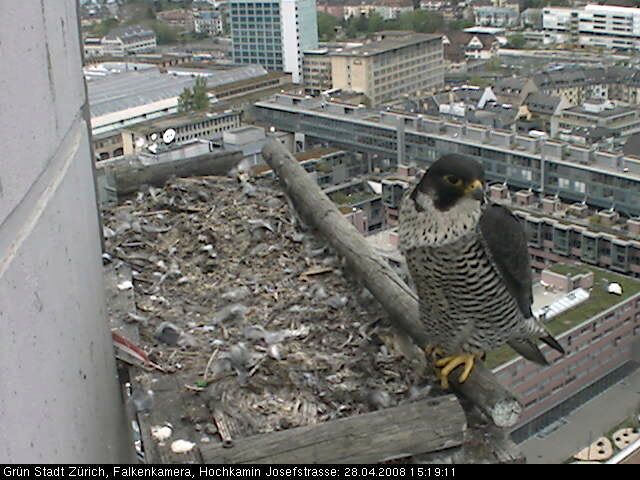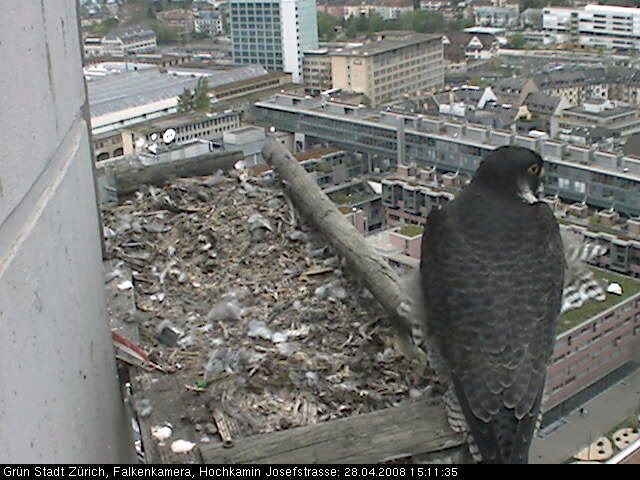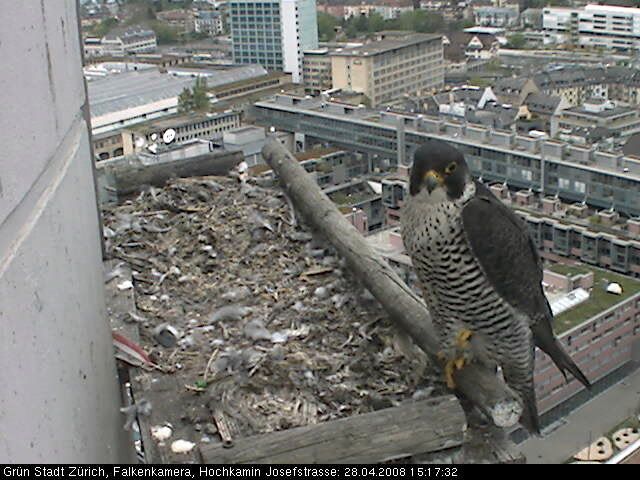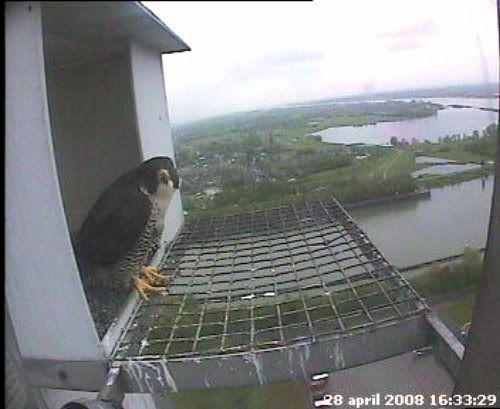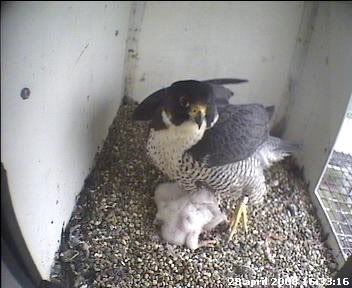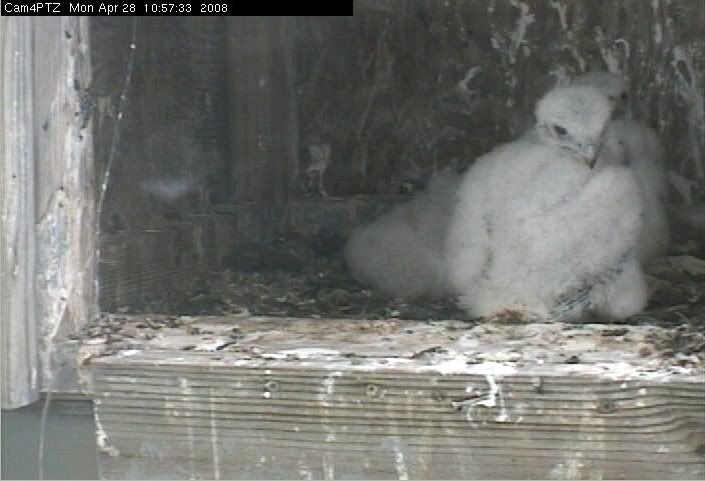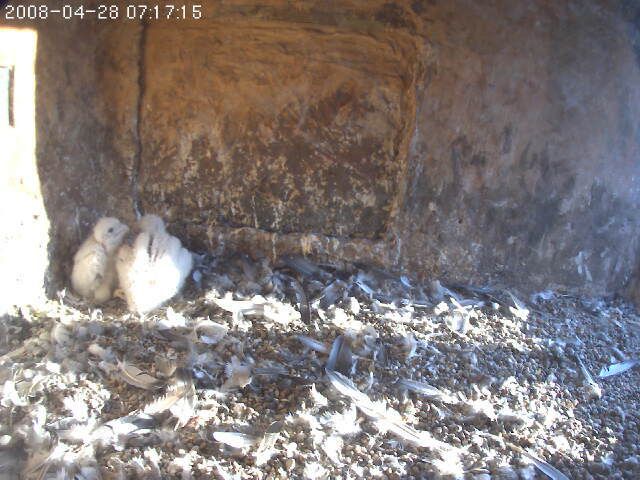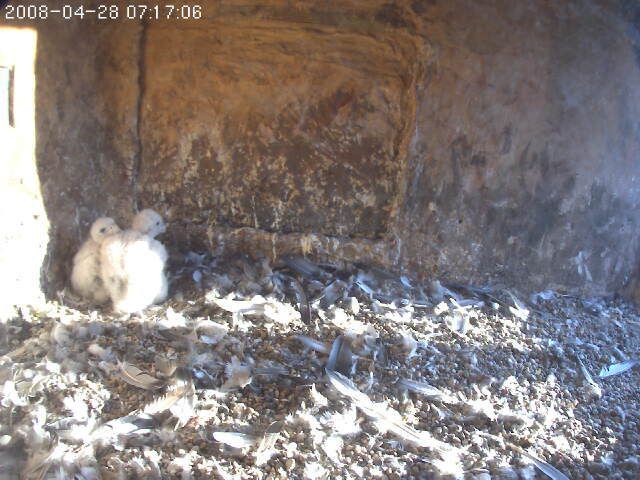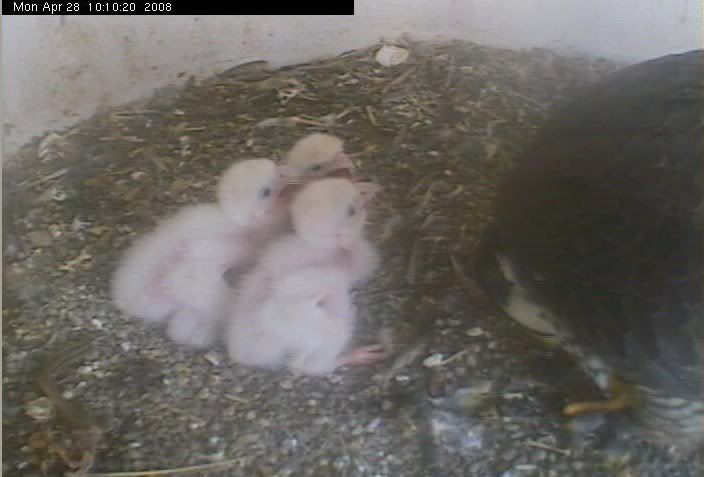
How qute and sweet are these 3 eyases. Being offered delicious food to grow into bid, healty and strong raptors. The 4 th egg is still around, as if it should participate in the food ritual. But the embryo inside did never really start it's existance.

Remember this image from MaRCH 17. This egg is covered in droppings. That's the end of it. There are many infectious organisms that can be transferred from the female to the egg that may cause the egg to die. In some cases, the infectious organism may infect the egg, yet the embryo may continue developing, and may even hatch, carrying the organism at hatch time. If an organism is passed from an infected female directly into an egg, and then into the developing embryo, this is called vertical transmission. The term vertical transmission is also used to describe transmission of an infectious agent from a parent to an egg during fertilization, during egg development in the oviduct of the female or immediately after oviposition.
Once the egg is laid, some infectious organisms can pass through the eggshell upon contact with contaminated feces, urates or bedding. This is also considered vertical transmission if infection occurs immediately after laying. Some organisms are transmitted from the ovary to the egg, and this is called transovarian transmission. Infectious organisms harbored in the oviduct can also be passed into the egg prior to the shell being formed. Some organisms can infect eggs if contents from the cloaca contaminate the surface of the eggs, and then penetrate the egg. The other method of transmission of infectious organisms is by horizontal transmission. Some ways that horizontal transmission occurs are by preening, inhalation, copulation, insect or animal bites, ingestion, contact with contaminated equipment or fighting.
It seems obvious that prior to the egg membranes and shell being applied to it, the egg would be susceptible to infection by numerous infectious organisms. Even though the eggshell appears solid, it contains microscopic pores that can allow liquids and organisms of small enough size into the egg. The pores allow the transfer of gasses, as well.
All these things can be the reason as well of the tragedy at the VAFalcon Richmond nestsite.
